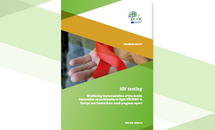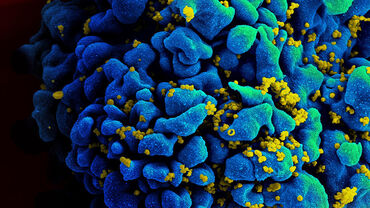HIV testing, Monitoring implementation of the Dublin Declaration on partnership to fight HIV/AIDS in Europe and Central Asia: 2018 progress report
This report presents the situation of HIV testing in Europe and Central Asia. It summarises data on implementation of national guidelines that shape HIV testing policies, the provision and uptake of HIV testing services in general and among key populations, and efforts being made to widen engagement with HIV testing and reduce late diagnosis.
Executive Summary
Key findings include:
- One in five people living with HIV across Europe and Central Asia remain unaware of their HIV status.
- Forty countries report that they have guidelines on HIV testing in place. The majority of countries with guidelines published prior to 2015 report plans for revision in the next two years.
- Coverage of testing services varies substantially between different types of testing interventions, with testing in traditional health settings having generally higher coverage than testing in home or community settings. Forty-one countries report that they implement community-based testing delivered by medical providers, while only 19 countries implement community-based testing delivered by lay providers.
- There is limited data availability on testing rates among key populations, in particular migrants, prisoners and sex workers.
- Data availability on the number of tests and positivity rates of testing interventions in different settings is very limited. For those that could provide data, all countries reported positivity rates higher than 0.1% for their routine testing interventions – indicating that these interventions are cost-effective.
- Roughly half of the 52 reporting countries provided data on linkage to care. Based on the data reported, rates of linkage to care are high on average across the WHO sub-regions, but there is significant variation within regions.







